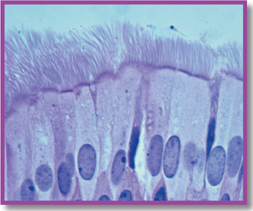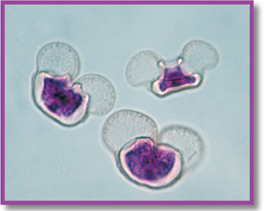Multicellular Life
 How do the cells of multicellular organisms work together to maintain homeostasis?
How do the cells of multicellular organisms work together to maintain homeostasis?
Unlike most unicellular organisms, the cells of human beings and other multicellular organisms do not live on their own. They are interdependent; and like the members of a winning baseball team, they work together. In baseball, each player plays a particular position: pitcher, catcher, infielder, outfielder. And to play the game effectively, players and coaches communicate with one another, sending and receiving signals. Cells in a multicellular organism work the same way.  The cells of multicellular organisms become specialized for particular tasks and communicate with one another to maintain homeostasis.
The cells of multicellular organisms become specialized for particular tasks and communicate with one another to maintain homeostasis.
BUILD Vocabulary
PREFIXES The prefix homeo- in homeostasis means “the same.” Organisms are constantly trying to maintain homeostasis, to keep their internal physical and chemical conditions relatively constant despite changes in their internal and external environments.
Cell Specialization The cells of a multicellular organism are specialized, with different cell types playing different roles. Some cells are specialized to move; others, to react to the environment; still others, to produce substances that the organism needs. No matter what its role, each specialized cell, like the ones in Figures 7–22 and 7–23, contributes to homeostasis in the organism.
 In Your Notebook Where in the human body do you think you would find cells that are specialized to produce digestive enzymes? Why?
In Your Notebook Where in the human body do you think you would find cells that are specialized to produce digestive enzymes? Why?

FIGURE 7–22 Specialized Animal Cells: Human Trachea Epithelium (LM 1000X)
▸ Specialized Animal Cells Even the cleanest, freshest air is dirty, containing particles of dust, smoke, and bacteria. What keeps this bad stuff from getting into your lungs? That's the job of millions of cells that work like street sweepers. These cells line the upper air passages. As you breathe, they work night and day sweeping mucus, debris, and bacteria out of your lungs. These cells are filled with mitochondria, which produce a steady supply of the ATP that powers the cilia on their upper surfaces to keep your lungs clean.

FIGURE 7–23 Specialized Plant Cells: Pine Pollen (LM 430X)
▸ Specialized Plant Cells How can a pine tree, literally rooted in place, produce offspring with another tree hundreds of meters away? It releases pollen grains, some of the world's most specialized cells. Pollen grains are tiny and light, despite tough walls to protect the cells inside. In addition, pine pollen grains have two tiny wings that enable them to float in the slightest breeze. Pine trees release millions of pollen grains like these to scatter in the wind, land on seed cones, and begin the essential work of starting a new generation.
Table of Contents
- Formulas and Equations
- Applying Formulas and Equations
- Mean, Median, and Mode
- Estimation
- Using Measurements in Calculations
- Effects of Measurement Errors
- Accuracy
- Precision
- Comparing Accuracy and Precision
- Significant Figures
- Calculating With Significant Figures
- Scientific Notation
- Calculating With Scientific Notation
- Dimensional Analysis
- Applying Dimensional Analysis




